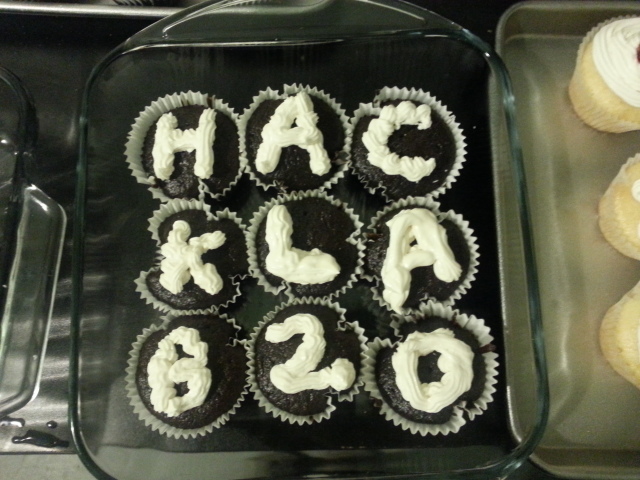Cooking at Hacklab: Coconut barfi
Posted: - Modified: | cookingIt took me an hour to get from downtown to Hacklab on a stop-and-go Queen streetcar. Next time, I should probably take the King streetcar instead, or even go all the way north to Bloor and then south on the Dufferin bus. Anyway, I'd given myself enough of a buffer to not feel horribly guilty about being late meeting people who were expecting me there around 6-ish anyway, and that was when I made it. Max was already there when I arrived, and Gabriel joined us when we were at the supermarket picking up groceries.
Chris and Alaina were busy making two courses (korma and hot-and-sour soup), so I figured we'd go with an Indian vegan dessert to accompany the korma. Some rapid Googling turned up this Coconut Barfi recipe from Diwali Sweets (by way of Veg Recipes of India's review). We made a triple batch of the following recipe:
- 1/2 cup semolina flour (we used medium, but this might be better with fine)
- 1/2 cup dry coconut flakes (we used shredded)
- 1 tablespoon coconut oil
- 2 tablespoons chopped cashew pieces (got roasted cashews from the bulk bin so that we could snack on them while cooking)
- pinch of salt
For the sugar syrup:
- 1/2 cup ground raw sugar (we used turbinado sugar, couldn't find anything raw)
- 3 tablespoons water
- 1/8 to 1/4 teaspoon cardamom powder (we ended up grinding our own, since the nearby supermarket doesn't stock powdered cardamom)
It took longer to make the sugar syrup than expected, but then again, I'm pretty new to syrup making, so I wasn't quite sure what “one thread consistency” meant. Anyway, it still turned out as nicely cardamom-scented nibble, crunchy without being jaw-breaking.
Gabriel generously remarked that the amount of salt I added made it remind him of salted caramels. I think perhaps a smaller pinch would do next time.
It was lots of fun cooking with both old friends and new acquaintances, and the kitchen at Hacklab supports having multiple people quite nicely (aside from a bit of stove coordination when we had three things on the go). Yay cooking!


